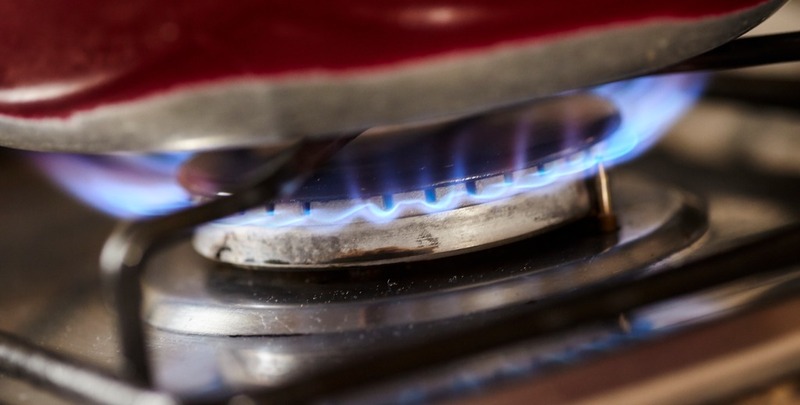
The Warning Signs of a Gas Leak
Gas leaks in the home are potentially lethal, so it pays to be diligent when it comes to your appliances and gas pipes. Gas has an odour and can be seen, in some circumstances, so may be detectable without using any equipment. Slow gas leaks, however, may be more difficult to detect.
If you do identify gas leaks, the first step is to turn off the gas, evacuate your home, then call a professional gas fitter. They can check your gas appliances when every is under control.
Carbon monoxide leaks from a gas appliance are nearly impossible to detect, so we’ll address that as well. Before looking at various gas detection units, let’s examine simple ways to identify gas leaks without technical help.
Are You Smelling Rotten Eggs?
Your nose is the best way to detect gas leaks, because the smell is unavoidable and easy to recognise.
Natural gas has no odour but gases from your appliances have the added chemical methyl mercaptan, giving it that unpleasant sulphur or rotten egg smell so it’s easier for you to detect.
If you smell gas, first check that the burners on your gas stove are turned off and, if that doesn’t remedy the problem, immediately turn off your gas supply line.
Open doors and windows and leave the house if the smell is particularly strong. Always remember that gas is flammable, so never use a match or lighter if you need light.
Use your phone or a battery powered torch if you need to find your way out in the darkness. It’s preferable not to use any electrical appliances as well.
Listen for a Hissing Sound
Gas leaks can emit a hissing or whistling sound near your appliances or pipes.
If you think you can hear a hiss or whistle sound, listen carefully and try to find the source of the sound to determine where it’s coming from. Carry a piece of paper with you, which will flutter against the pressure of gas escaping.
Remember that gas leaks will make a hissing or whistling sound only when escaping through a small hole or space, so not all gas leaks will be audible.
A Gas Leak Might Be Visible
You can smell gas and hear gas, and in some cases you can see gas. A gas leak can actually be seen as a white cloud or moving dust. So although natural gas is colourless, gas leaks can stir up dust on your pipes, making it visible if you’re focused on it.
So, if you notice a misty cloud near a gas pipe it could possibly be a gas leak, so turn off your gas immediately.

How is Your Health When You’re Home?
You may be showing physical signs of a gas or carbon monoxide leak while you’re at home.
If you’re experiencing headaches, nausea, dizziness and body aches for no reason, definitely check your gas lines and appliances for possible gas leaks. Other symptoms can include irritation of the eyes, fatigue, nose bleeds and difficulty breathing.
Is a Gas Leak Killing Your Plants?
If you notice that your plants are damaged or dying despite you caring for them, that could be a sign of gas leaks.
Plants need carbon dioxide in order to survive and toxic gas leaks limit the amount your plants receive. So if you see that plants are wilting or yellowing there may be gas leaking into the room.
It’s actually a good idea to keep plants in your home in areas where there’s a potential for gas leaks.
Orange Flames on Your Gas Stove
When you light your gas stove, the burners should emit blue flames.
If you notice that the flames are more orange or yellow, it’s a sign that the natural gas is not burning properly and might be evidence of gas leaks.
Remember that flames on a gas stove may be orange or yellow briefly before turning blue. It’s only a concern if they remain an orange or yellow colour.

Higher Gas Bills Than Usual
If you notice that your gas bills have increased recently, it could be evidence of gas leaks. Contact your gas distributor to confirm that the bill is correct and has been estimated accurately.
Remember to take into account any recent changes to your lifestyle that might show up on your gas meter. If you’re cooking at home more often or using the gas heater because it’s the middle of winter, obviously you’re going to see a spike in your gas bill.
How To Use Gas Detection Units at Home
There are easy-to-operate devices that you can use to test your gas lines and appliances so you can identify gas leaks.
Gas detection devices can be important additions to your home, not only for gas leaks but to avoid the possibility of carbon monoxide poisoning.
Remember that gas leak detectors cannot tell the difference between the various types of flammable gas leaks, including natural gas, LPG (liquefied petroleum gas), propane or methane.
Here are some gas detection units to consider:
- Carbon monoxide detector: Installing a carbon monoxide detector can be as important as having a smoke alarm. Carbon monoxide (CO) is colourless and odourless and carbon monoxide poisoning is potentially life-threatening. These detectors must be installed at knee-level or lower because CO is heavier than air.
- Hand-held gas detector: You can use a portable gas detector to find a concentration of gas in different areas of the home. If you walk through your home with a gas detector, the alarm will let you know if the area is not safe.
- Combustible gas leak detector: This kind of detector is designed to be permanently installed and turned on, like a smoke alarm. An alarm will be set off if there’s impending risk from a gas leak.
Prepare for Gas Safety
If a gas emergency occurs, it makes sense to be prepared. Therefore, in conclusion, here are some key points to remember:
- Invest in a gas detector if you use natural gas or LPG at home.
- If you don’t plan to buy any type of gas detection unit, it would be wise to have your gas pipes and appliances checked annually by a professional gas fitter.
- Educate yourself on all the signs of gas leaks so that you can recognise the problem and know when to call a fully qualified gas fitter.
- Always remember to shut off the gas immediately and evacuate the house when gas leaks are detected.
Please note: This information is provided for advice purposes only. Regulations differ from state to state, so please consult your local authorities or an industry professional before proceeding with any work. See our Terms & Conditions here.


